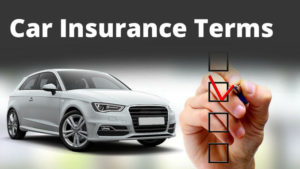 Courtesy of iii.org
Courtesy of iii.org
If you rent a house or apartment and experience a fire or other disaster, your landlord’s insurance will only cover the costs of repairing the building. To financially protect yourself you will need to buy renters or tenants insurance.
Renters insurance protections
Like homeowners insurance, renters insurance includes three key types of financial protection:
- Coverage for personal possessions
- Liability protection
- Additional living expenses (ALE)
The big difference is that renters insurance doesn’t cover the building or structure of the apartment—that’s the landlord’s responsibility.
The following questions will help you choose the right coverage when you are shopping around for renters insurance or discussing your needs with an insurance professional.
Coverage for personal possessions
Coverage for your personal property is a key component of renters coverage, protecting you from theft, fire and a host of other unfortunate events.
1. How much insurance should I buy?
Make sure you have enough insurance to replace all of your personal possessions in the event of a burglary, fire or other covered disaster. The easiest way to determine the value of all your personal possessions is to create a home inventory—a detailed list of all of your belongings along with their estimated value.
2. Should I choose replacement cost or actual cash value coverage?
Actual cash value policies include a deduction for depreciation (that is, the idea that items lose value over time). Replacement cost coverage is pricier but can be well worth the extra expense if your belongings are damaged or destroyed (think about how much you’d get for your TV used versus how much it would actually cost to replace).
3. What disasters are—and are not—covered?
Renters insurance covers you against losses from fire or smoke, lightning, vandalism, theft, explosion, windstorm and certain types of water damage (such as from a burst pipe or when the tenant upstairs leaves the water running in the bathtub and floods your apartment).
Like standard homeowners policies, most renters insurance policies do not cover floods or earthquakes. Flood coverage is available from the National Flood Insurance Program and a few private insurers. You can get earthquake insurance as a separate policy or have it added as an endorsement to your renters policy, depending on where you live.
4. What is my deductible, and how does it work?
A deductible is an amount of money you responsible for paying before your insurance coverage. For example, if you have a $500 deductible and a fire destroys $5000 worth of furniture, the first $500 is your responsibility and your insurance company will cover $4500.
Renters insurance deductibles are generally specified as a dollar amount, which can be found on the Declarations page of your policy. In general, the larger the deductible, the lower your insurance premium.
5. What is a “floater” and do I need one?
A floater is a separate policy that provides additional coverage for more costly valuables if they are lost or stolen. If you have expensive jewelry, furs, collectibles, sports equipment or musical instruments, consider adding a floater to your policy to protect against their loss.
6. Am I covered if I am traveling or away from home?
Most renters polices include what is called off-premises coverage, which means belongings that are outside of your home are covered against the same disasters listed in your policy. For example, property stolen from your car or a hotel room while you’re traveling would be protected.
Liability protection
7. What is liability insurance?
Renters insurance provides liability protection that covers you against lawsuits for bodily injury or property damage done by you, your family members and even your pets. This coverage pays for the cost of defending you in court, up to the limit of your policy.
Your renters policy should also include no-fault medical coverage as part of the liability protection. Medical payments coverage allows someone who gets injured on your property to simply submit his or her medical bills directly to your insurance company so the bills can be paid without resorting to a lawsuit.
8. Do I have enough liability insurance?
Make sure the amount of liability coverage provided by your policy is sufficient to protect your financial and other material assets in the event of a lawsuit.
9. Do I need an umbrella liability policy?
If you need a larger amount of liability protection, consider purchasing a personal umbrella liability policy. An umbrella policy kicks in when you reach the limit on the underlying liability coverage provided by your renters or auto policy. It will also cover you for things such as libel and slander.
Additional living expenses
Additional living expenses (ALE) coverage provides coverage if your home is destroyed by an insured disaster and you need to live elsewhere for a time.
9. What does ALE cover?
The additional living expenses portion of your rental insurance policy pays for hotel bills, temporary rentals, restaurant meals and other expenses you incur while your rental home is being repaired or rebuilt. Essentially, it covers the expenses you would not have to incur if you had your usual roof over your head.
10. How much does ALE cover?
Most policies will reimburse you the full difference between your additional living expenses and your normal living expenses; however, there are generally limits as to the total amount the insurer will pay or time limits specifying how long you’re eligible for the ALE payments. Make sure you’re comfortable with the limits of the policy you choose.
Multiple policy and other discounts
10. What types of discounts are offered on renters insurance?
Insurance companies often offer discounts on renters insurance if you have another policy with them—for example, car insurance or business insurance.
You may also get a discount if you:
- Have a security system
- Use smoke detectors
- Use deadbolt locks
- Have good credit
- Stay with the same insurer
- Are over 55 years old
Discounts may vary widely by insurance company and by state, so review your options carefully. As always, the same rule-of-thumb applies: shop around for the best deal.



